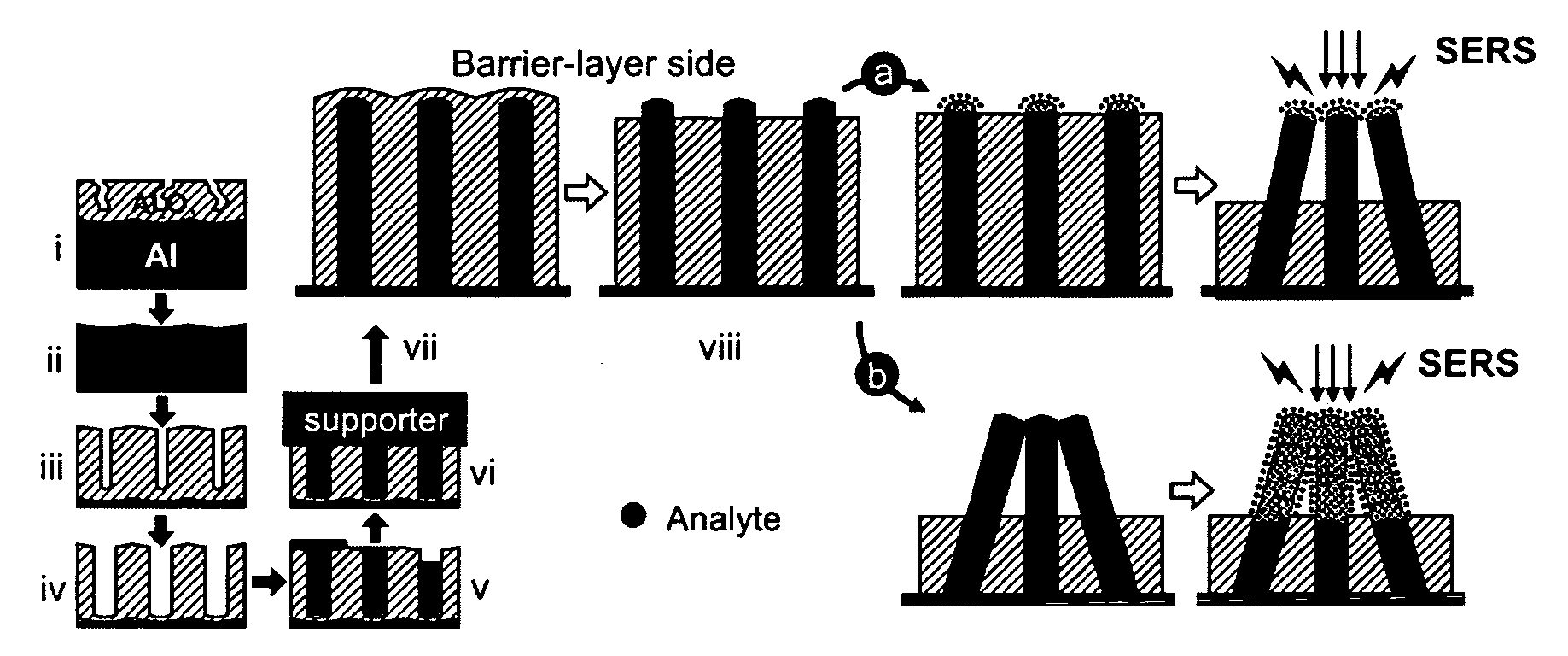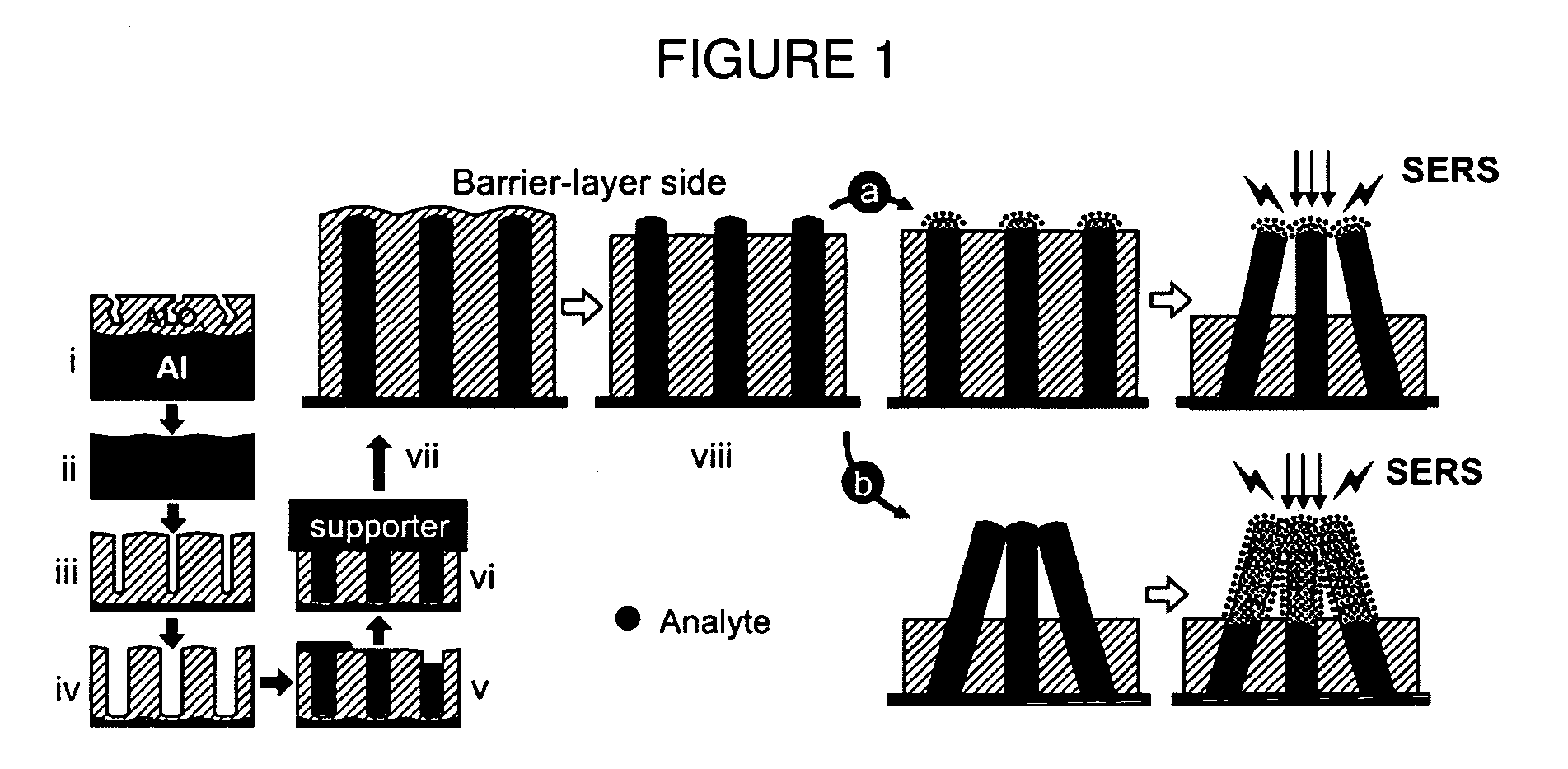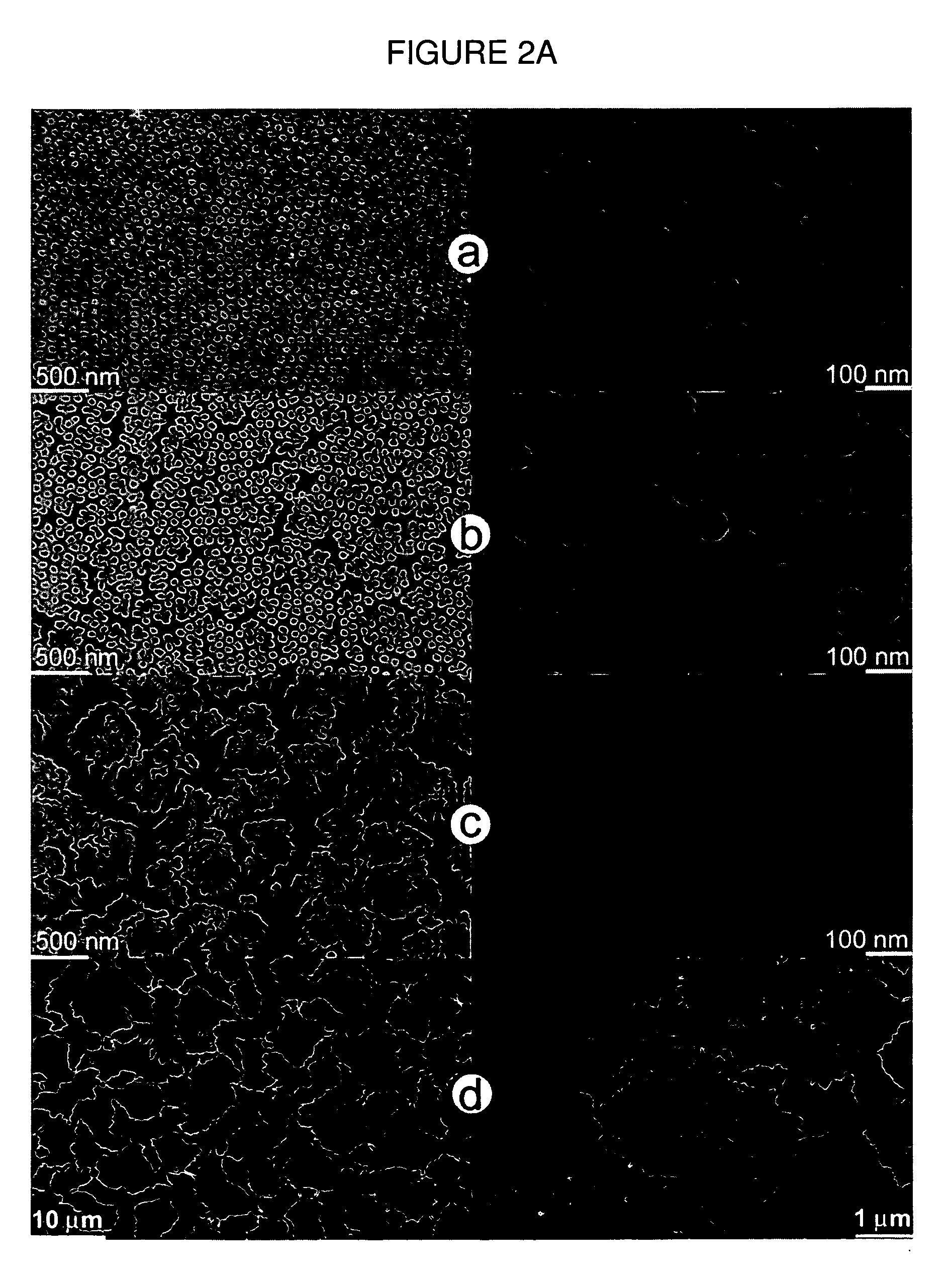Platform for chemical and biological sensing by surface-enhanced raman spectroscopy
a raman spectroscopy and surface-enhanced technology, applied in the direction of spectrometry/spectrophotometry/monochromators, instruments, optical radiation measurement, etc., can solve the problems of sers-active substrates not being robust enough to ensure adequate shelf life, etc., to facilitate surface enhanced raman spectroscopy and facilitate the formation of ‘hot spots'
- Summary
- Abstract
- Description
- Claims
- Application Information
AI Technical Summary
Benefits of technology
Problems solved by technology
Method used
Image
Examples
example 1
Making a Silver / Porous Aluminum Oxide Substrate
[0074]Certain embodiments of the present invention are related to a sensing platform for performing surface-enhanced Raman spectroscopy using arrays of metallic nanowires. FIG. 1 illustrates an exemplary method used for the preparation of silver nanowire embedded in porous aluminum oxide (Ag-PAO) and the manner in which it was treated so as to render it a SERS-active substrate. PAO was electrochemically fabricated on high purity (99.99%) aluminum sheet in 0.3 M oxalic acid using Masuda's two-step anodization process (FIG. 1, panels (i) through (iii), Masuda, H.; Fukuda, K. Science 1995, 268, 1466-1468.) The anodization was carried out at 40 V D.C. at 15-17° C. A one-hour second anodization step resulted in an anodic alumina template with nano-channel depth of about 5 μm. To reduce the thickness of the barrier layer facilitating Ag deposition, a third anodization was carried out in 0.2 M phosphoric acid for 10 min under the same conditio...
example 2
Add Analyte then Etch Analysis vs. Etch then Add Analyte Analysis
[0075]In order to produce a clean and uniformly Ag-filled surface for SERS spectroscopy, the Ag-filled PAO (Ag-PAO) template was epoxy-glued to a silicon wafer oxide-side down and the aluminum on the backside of Ag-PAO was removed by etching in saturated aqueous HgCl2 for 1 h (FIG. 1, panels (vi) to (vii). The alumina matrix of the resulting Ag-PAO templates was then partially etched in 0.1 M aqueous NaOH for 10 min to expose the tips of Ag nanowires (FIG. 1, panel (viii)). The templates were then dipped in 1 mM an ethanolic benzenethiol (BT) solution for 10 min. The foregoing describes what we will refer to as the add-analyte-then-etch method (FIG. 1, scheme (a)). The BT-modified Ag-PAO templates were then immersed in 0.1 M NaOH solution for variable lengths of time from 30 to 450 s in 30 s intervals. Before each Raman measurement, the template was taken out of the etchant and washed with distilled water and dried und...
example 3
Observing SERS While Etching
[0083]Another approach to etching and analyte analysis is illustrated in FIGS. 4-6. The tips of the nanowires of Ag-filled PAO template are functionalized with diaminoazobenzene (DAAB, shown at left in FIG. 4, panel (a)), which serves as the analyte in for purposes of this example, at the open end of the pores. The template is etched continuously in phosphoric acid while the SERS spectrum is recorded. FIG. 4, panel (a) shows a schematic of the method used, where the substrate is shown open-pore side up, with 1-2 mm of nanowires exposed. These exposed nanowire tips are functionalized with DAAB analyte. The substrate is then immersed in 7% phosphoric acid and SERS spectra are taken while etching occurs. FIG. 4, panel (b) shows a representation of the nanowires' conformation as etching continues. Step (I) of panel (b) shows that as etching begins, the nanowires remain vertical and widely separated. As etching continues the nanowires begin to spacially conden...
PUM
| Property | Measurement | Unit |
|---|---|---|
| aspect ratio | aaaaa | aaaaa |
| distance | aaaaa | aaaaa |
| distance | aaaaa | aaaaa |
Abstract
Description
Claims
Application Information
 Login to View More
Login to View More - R&D
- Intellectual Property
- Life Sciences
- Materials
- Tech Scout
- Unparalleled Data Quality
- Higher Quality Content
- 60% Fewer Hallucinations
Browse by: Latest US Patents, China's latest patents, Technical Efficacy Thesaurus, Application Domain, Technology Topic, Popular Technical Reports.
© 2025 PatSnap. All rights reserved.Legal|Privacy policy|Modern Slavery Act Transparency Statement|Sitemap|About US| Contact US: help@patsnap.com



